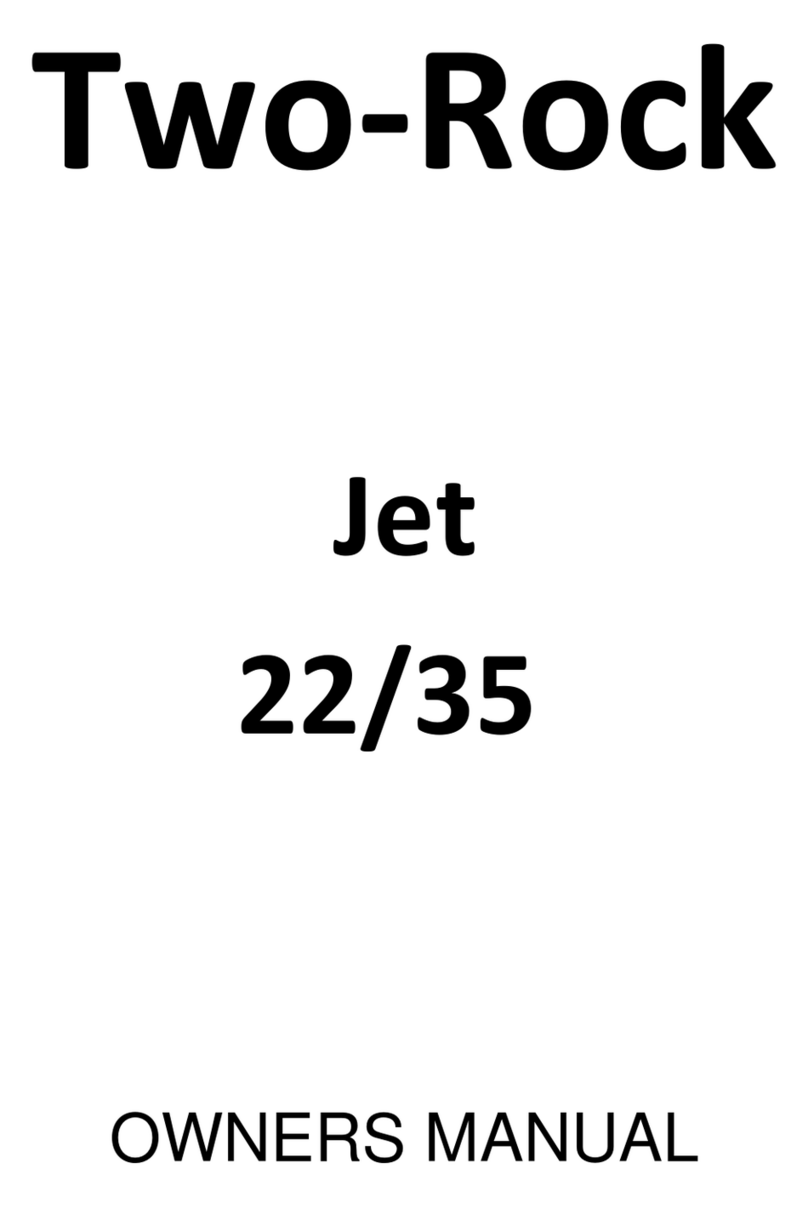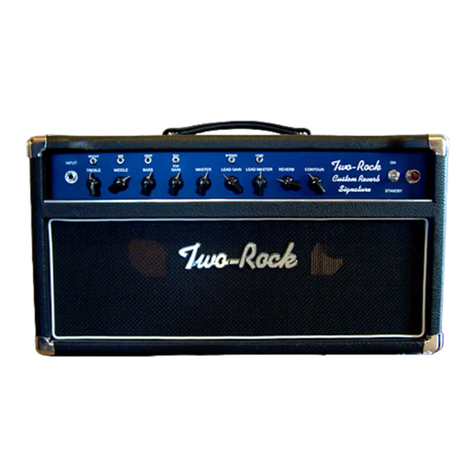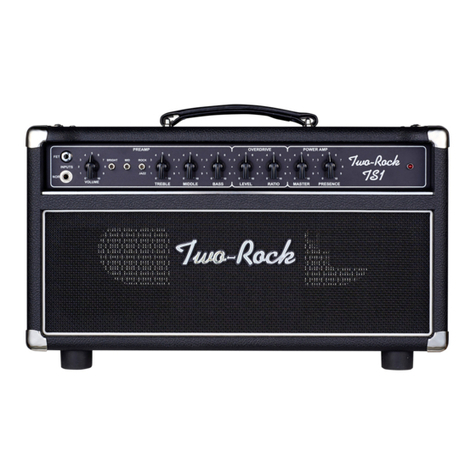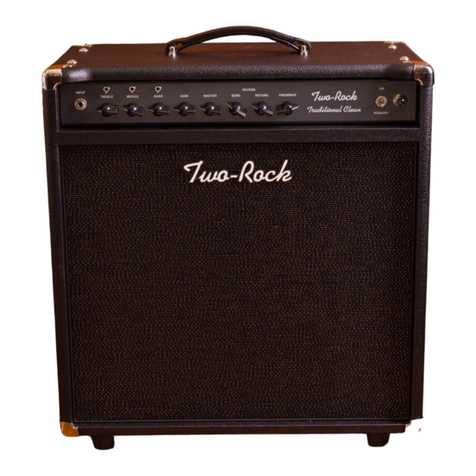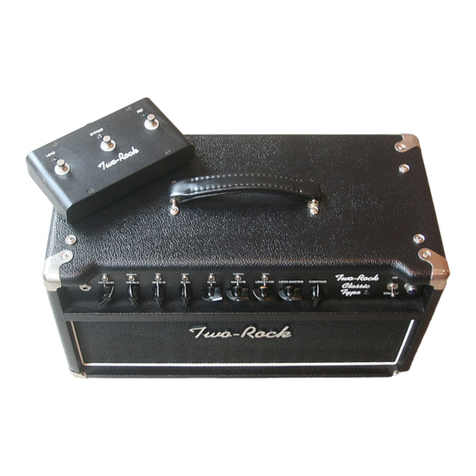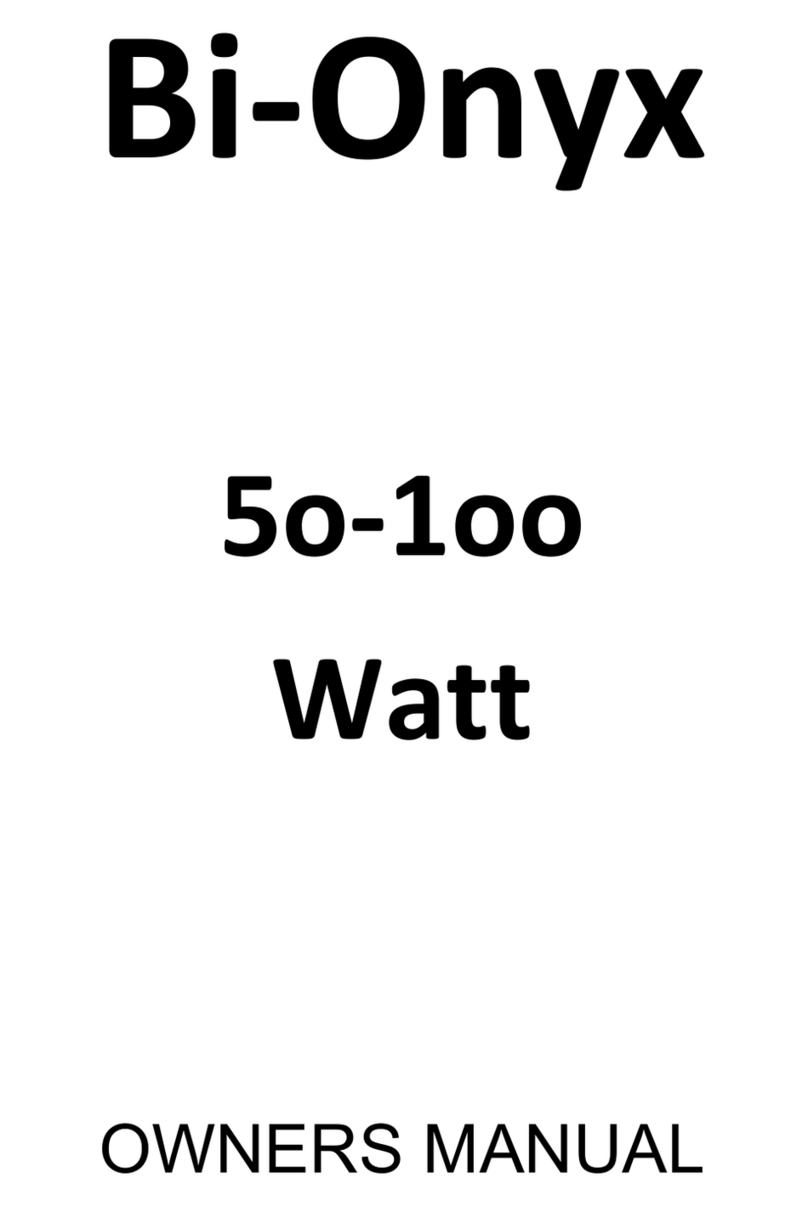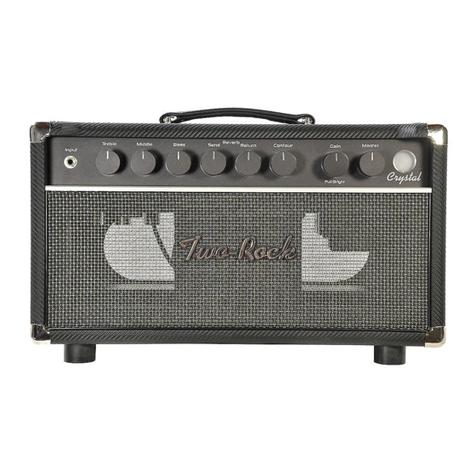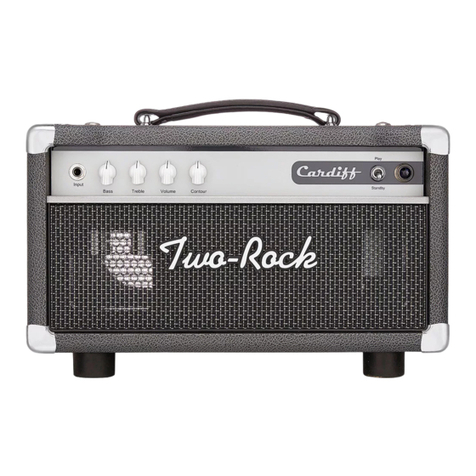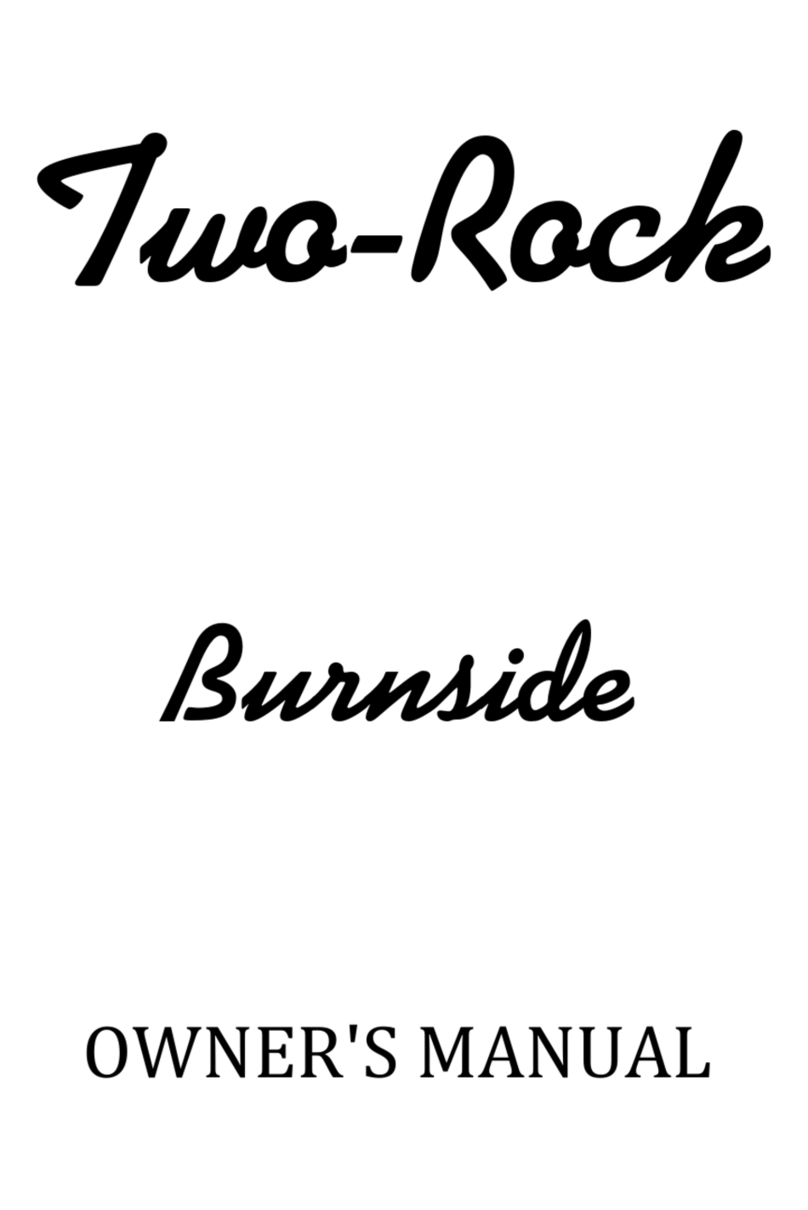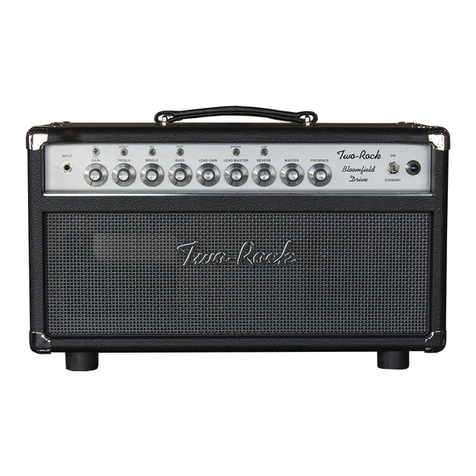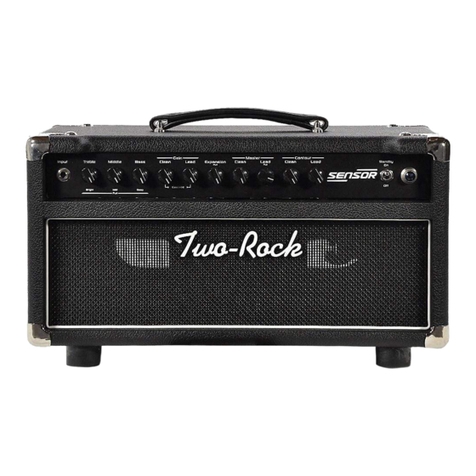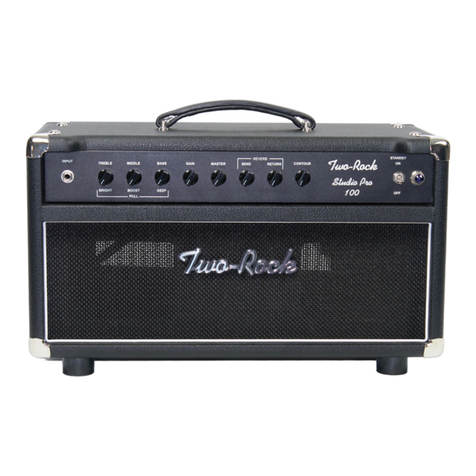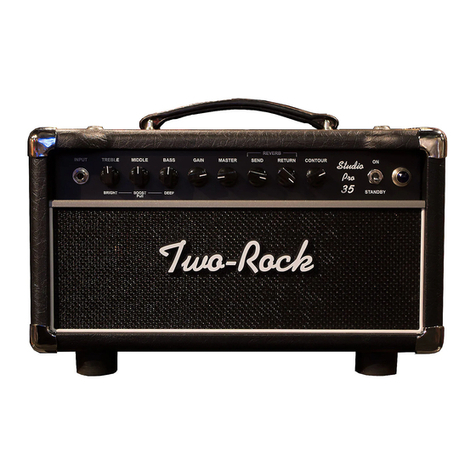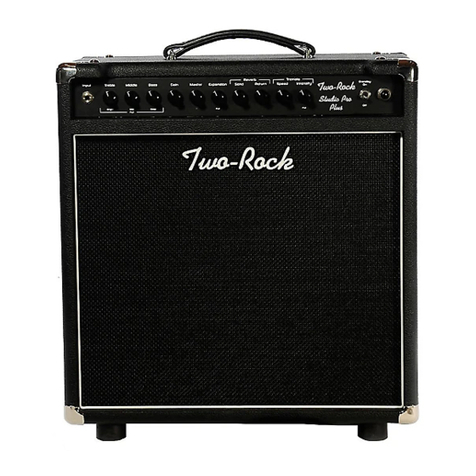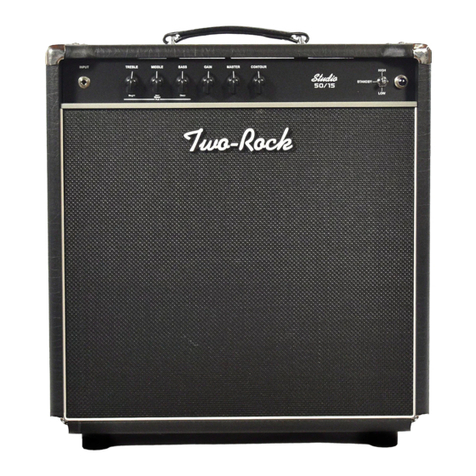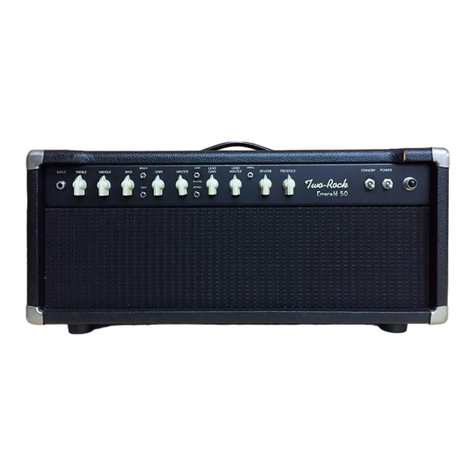
Input Jack- High impedance input to the amplier. Plug in your instrument here.
Push/Pull Treble Control- Adjusts the high frequency response. In the full counter-clockwise position,
high frequencies are bypassed to ground. In the full clockwise position, high frequencies are allowed
to pass to the next gain stage. When the knob is in the “out” position, the high frequency response is
boosted. This is most effective when the input gain is set at 12 o’clock or lower. The effect is less dra-
matic as the input gain control is adjusted past the 12 o’clock position.
Push/Pull Mid Control- Adjusts the mid-range response. In the full counter-clockwise position, the
tone will be somewhat “scooped” of mid-range response, emphasizing the highs and lows. In the full
clockwise position, mid-range frequencies are allowed to pass to the next gain stage. When the knob is
in the “out” position, the mid range frequency response is boosted.
Push/Pull Bass Control- Adjusts the bass response. In the full counter-clockwise position, low fre-
quencies are cut. In addition, the response of the treble and mid-range controls is greatly reduced. In
the full clockwise position, low frequencies are allowed to pass to the next gain stage. When the knob
is in the “out” position, the low and low-mid frequencies are boosted. This is a low frequency contour
switch, changing the low and low-mid response.
Gain- Adjusts the overall gain of the amplier. Start with this control in the 12 o’clock position.
Master Volume- Adjusts the output level of the amplier.
Reverb Send- The reverb drive control determines the amount of signal applied to the reverb tank. Low set-
tings will create a very open, small room reverb effect with a short decay time. Advancing the control clockwise
increases the signal applied to the driver, and a very saturated effect with a sharp attack and a long decay can be
obtained.
Reverb Return- The reverb return control mixes the reverb effect signal with the dry signal. At full counterclock-
wise rotation, the reverb effect is defeated. Using the return control in conjunction with the reverb drive control, a
wide range of natural reverb effects can be produced.
Contour- The contour control is an active wide band sweep. In the 12 o’clock position, the amps’ frequency
response is at. Counterclockwise rotation reduces high end response and increases low frequencies. Counter-
clockwise rotation decreases low end and increases the high frequency response. This control is very useful for
maintaining preamp tone control settings, while allowing a global adjustment to compensate for differences in
room acoustics, speaker cabinets, or bright to dark guitars (PRS Humbucker to Strat, for example). This control
also actively reduces the articulation available, allowing a softer setting, or extremely open and revealing, de-
pending on your individual style and requirements.
Stand-by Switch- Should be in the “down” or “stand-by” position when you apply power to the unit. After a few
seconds, place the switch in the “up” position to use the amplier. You may leave the unit “powered up” and place
this switch in the “stand-by” position to mute the output.
Indicator Lamp- This lamp will illuminate when the power switch is in the “up” position, indicating the unit is
receiving A/C power.
Front Panel Functions

